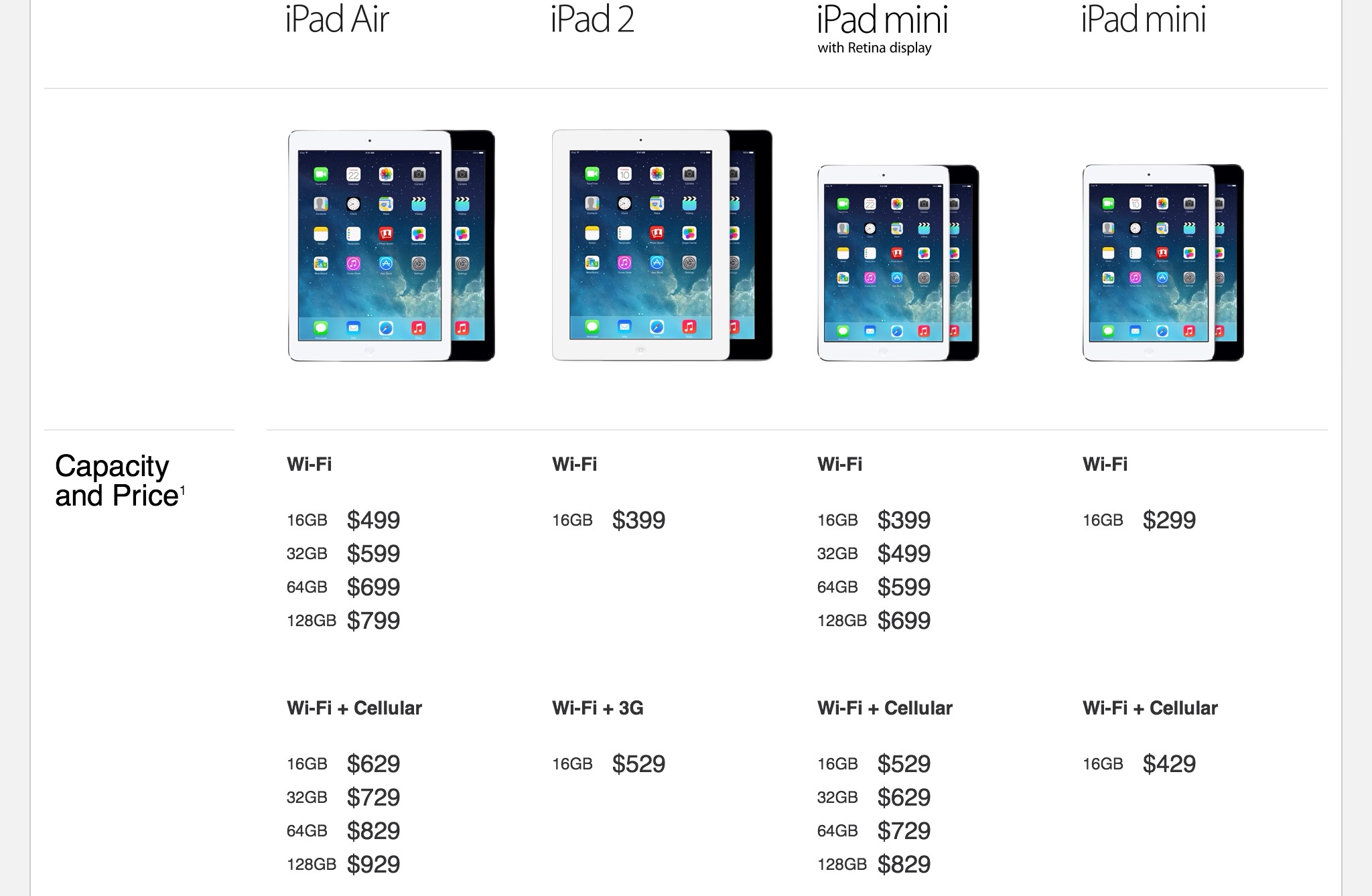I have a dilemma. While I don’t need to upgrade my iPad 3, I have the “I want a new tablet” itch, and it looks like the newly updated iPad mini will fit the bill nicely. The real question, though, is whether to opt for another wifi tablet or purchase one with integrated 4G!
The other Gear Diary editors see this as a no-brainer; the convenience of having integrated 4G is worth the cost, hands down. But it occurred to me that it was worth investigating whether that’s really the case, or whether there are other, more cost-effective ways to have a connected iPad. Would tethering or a separate hotspot make more sense?
Let’s start with a few basic assumptions; it will cost $10/month to add an iPad to my Verizon plan, and it costs an additional $10 to move us up from a 4GB shared bucket to a 6GB bucket. So, somewhere around $20/month to add an iPad with 4G. There’s also the additional $130 for the integrated 4G in the iPad up front. So that breaks down the costs for an integrated iPad.
The there’s the wifi+tethering option. For the additional $10, I can increase our data bucket and tether a wifi iPad to my Lumia. The downside is that this means I’m likely to drain my phone battery faster, plus I need my phone and iPad in roughly the same spot. But since I mostly use my iPad in a fixed location, like home (where there’s wifi) and work (where there’s not) this option is somewhat appealing.
Of course, the way around the battery issue is to use a dedicated hotspot. I have a T-Mobile hotspot right now, but it ends in December. If I were to go this route, I would have the cost of a hotspot plus the extra device charge of $10, as well as the extra uptick in data costs. From an out of pocket standpoint, this isn’t so different than the iPad Mini with integrated 4G, except that this data is far more portable. If the iPad gets replaced or swapped, it doesn’t matter, since the hotspot is independent. If I want to tether Sarah’s Kindle Fire, or anyone else’s device, I can easily. At the same time, this hotspot function works for my Lumia as well as the iPad with 4G, and I can count on one hand the number of times someone else has used my hotspot. So the perceived flexibility isn’t as much of a boon as it first appears.
I started this little thought experiment convinced that, despite the assurances of my fellow Gear Diary editors, there really was a savings to decoupling 4G and a tablet. Now, I’m not so sure, and am leaning towards getting a 4G Mini. However, I reserve the right to change my mind before they start shipping!
What about you? Do you opt for integrated connectivity in your devices, or does a separate hotspot meet your needs? Let us know in the comments what your choice is and why!


I’m on AT&T right now with the grandfathered unlimited plan, so tethering to my iPhone isn’t an option, and I don’t particularly want to buy a dedicated 4G/LTE hotspot.
Additionally, I really don’t have a need for 4G/LTE connectivity very often since most places I use the iPad have Wifi.
So I’m considering going with T-Mobile for the iPad Air/mini. The free 200 MB/month and decent al la carte data plan options make this a no-brainer for me.
As I mentioned to Carly when she asked us, I am definitely going integrated LTE on the iPad Air. I had a WiFi iPad 1 and iPad 2, then got a 4G iPad 3, then back to WiFi for the iPad Mini (because I didn’t think I’d keep it).
One other issue is SPEED! Any tethering solution is slower than having built-in LTE, with some estimates saying you lose 50% speed.
I have an LTE iPad 3 on VZW (and my kids have LTE Minis on the plan) and I love having it. I just need to carry one thing when I travel, and I can tether with the iPad, which has a much better battery for that than any phone.
Amazing the appalling costs of 4G in US.. Anyplace else, get a prepaid sim and pay $10 a month for a gig.. If you don’t use it for a month it doesn’t matter.. Charge it up again when you need it..
You can do that in the US as well. The Verizon iPad comes with a SIM and you can get a 1GB prepaid plan for $20 a month, which you can turn on or off anytime. (2GB for $30). But you can also add it to an existing shared postpaid mobile plan for smartphones for $10 a month and use the same pool of data as the phones and othe tablets on the plan use, and you can add or remove the iPad anytime – it’s not under a contract but month to month, even if your phones are under contract.
But, yeah, the phone plans are ridiculous.